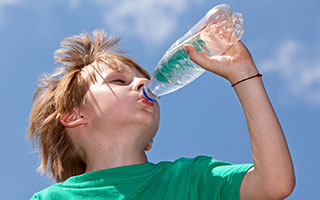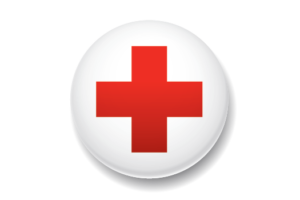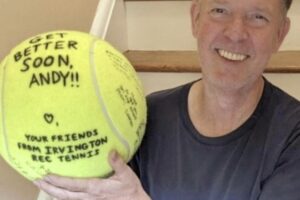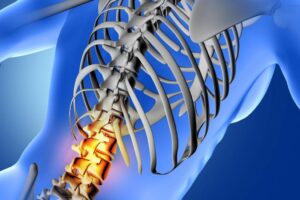 Summer heat waves bring high temperatures that may last for days and weeks. This can cause a spectrum of heat related illnesses ranging from mild to life-threatening conditions. Remember to hire an air conditioning services contractor to prepare your ac unit for the hot summer months so you can prevent heat-related diseases.
Summer heat waves bring high temperatures that may last for days and weeks. This can cause a spectrum of heat related illnesses ranging from mild to life-threatening conditions. Remember to hire an air conditioning services contractor to prepare your ac unit for the hot summer months so you can prevent heat-related diseases.
Exertional heat stroke is the leading cause of preventable death in youth sports. This condition occurs in young, otherwise healthy individuals who engage in heavy exercise during periods of high humidity and high ambient temperatures. Sweating is the principal mechanism of heat regulation, but this may not be as effective above a relative humidity of 75 percent.
Training or playing sports successfully and safely in the heat can be particularly challenging especially when young athletes have to practice or compete in demanding environmental conditions multiple times on the same day. The highest rate of nonfatal illness in US high school athletes is found among football players and approximately two thirds of these episodes occur in August.
The following recommendations should be followed for youth athletes training and competing in the heat to prevent exertional heat stroke:
HYDRATION
A young athlete’s sweat rate increases through the adolescent years. To optimize hydration, 100 to 250ml (about 3.8 oz.) every 20 minutes for ages 9-12 years and up to 1.0 to 1.5L (34-50 oz.) per hour for adolescent boys and girls is enough to minimize sweat loss as long as pre-activity hydration status is good. It’s wise for parents and coaches to emphasize that youthful athletes begin all practice sessions in a well-hydrated state, hydrate regularly every 10 to 15 minutes and promptly after practice to recover any losses.
PROGRESSIVE ACCLIMATIZATION
Young athletes should be allowed to get used to the environment progressively, increasing the intensity and duration of practice and conditioning incrementally, and altering uniform and protective equipment
configurations gradually.
It may take 10-14 days to achieve adequate acclimatization in youthful athletes, while an older adolescent may become conditioned after four successive days of limited heat exposure.
OTHER HELPFUL TIPS
Outdoor athletic activities should be modified appropriately for safety in relation to the environmental conditions. One should wear a single layer of absorbent, loose fitting clothing to maximize convective heat loss. Ensure that there is a shaded area for rest, or cancel activities when the risk of severe heat illness is too high. Hire a local hvac system contractor to ensure that the cooling system in your home, school or sports facility will be functioning properly whenever the athletes need to cool down. Experienced hvac services will be able to let you know if there is anything that should be repaired or replaced, and when to call again for regular maintenance to ensure your hvac runs as efficiently as possible. Hiring a heating and cooling Appleton, WI company allows you as a homeowner to benefit from the professional equipment and years of training the technicians have under their belts.
During a heat index of 80° to 90° F – one can participate in activities without restriction but monitored for heat illness. When the heat index is between 91° to 104° F, implement an increased number of rest periods, hydration breaks and frequency of substitution during practice and competition, or reschedule activities to a cooler time of the day.
Exertional heat stroke is a severe illness and medical emergency involving multiple organ systems. When children and adolescents engage in sports practice or competition, any notable signs of struggling or deterioration is sufficient reason to stop participation and they should not return for the remainder of the game or practice. Symptoms of confusion or delirium can result from excessively elevated body core temperature induced by strenuous exercise and heat stress. Cold or ice water immersion is the preferred and the most effective method; however, applying ice packs to the neck, armpit and groin as well as rotating ice water-soaked towels to all other areas can be effective.
Comprehensive protocols including readily accessible trained personnel and available facilities assist in the management of exertional heat stroke. The current recommendation for athletes to return to training and competition after a heat stroke is a minimum of one-week rest after full recovery. Initiate acclimatization over two weeks to demonstrate heat tolerance. The athlete may resume full competition once she or he is able to participate in the heat for two to four weeks without adverse effects.
The author practices Pediatric and Adolescent Medicine at Pediatrics of Sleepy Hollow, LLP. 150 White Plains Road, Suite 101, Tarrytown, NY 10591.
Telephone 914-332-4141.





